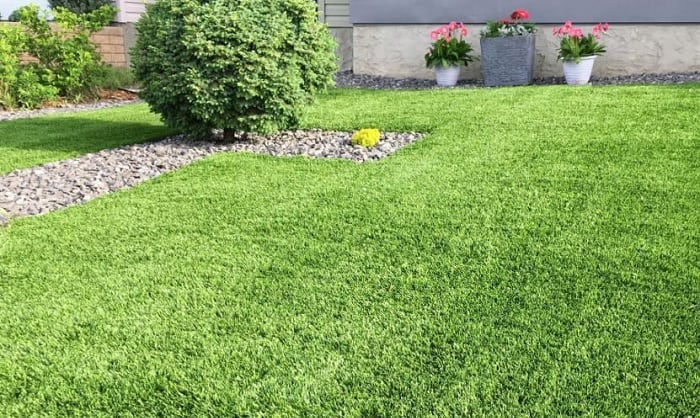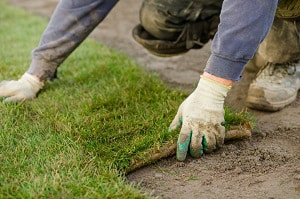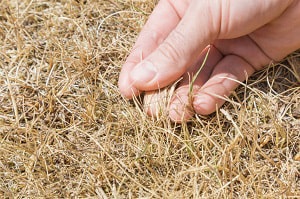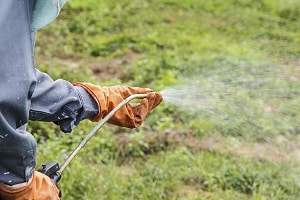Perfectly manicured lawns are pleasing to the eyes but are quite difficult and costly to maintain. For these reasons, some homeowners are choosing gardening over grass lawns. Aside from being great for the environment, having your own flower or vegetable garden is highly beneficial.
When converting your lawn into a garden, removing grass is the first order of business. Grass should be removed as it propagates fast and can compete with all the nutrients your plants should be getting.
If you’re interested in learning how to remove grass to start a garden, read more about the different methods below.
Table of Contents
How to Remove Grass for a Garden
There are various methods to do this but the best way to kill grass for garden largely depends on the type of grass growing on your lawn.
Varieties like Bermuda grass or kikuyu grass are particularly tenacious and aggressive methods would be required to remove them permanently.
Method #1: Sod Removal
This is the most straightforward way to remove grass from your lawn, which involves digging up the topsoil to uproot the grass.
This simple process might not work for Bermuda grass since its roots extend deep into the soil bed, and all it takes is a small portion of the root for the grass to grow back.
What to prepare:
- Garden hose
- Stakes
- Flat-head shovel
- Sod Cutter
- Soil amendments (optional)
Step 1: Dampen your lawn
Set up your garden hose and water your lawn. Doing this softens the soil and allows easier digging, which is important, especially if you are removing sod for garden without using any equipment.
Step 2: Mark the area
Measure the area of your lawn where you want to dig up grass. Next, place stakes and outline the edges of your intended garden area using a shovel or a spade. Further, divide the space into smaller squares or strips to serve as your guide.
Step 3: Start digging
With a shovel or a grass removal tool like a sod cutter, get ready to start the removal process. Just bear in mind to keep the shovel at a low angle to retain as much topsoil as possible.
Step 4: Clean up the sod
Roll up and remove the patches of sod from your garden area. These may be added to your compost pile or transferred to another area of your lawn to cover bald spots.
Step 5: Add soil amendments
Digging up grass might remove a large portion of valuable topsoil, which might result in lesser nutrients and weaker structure for your future plants to hold on to.
In this case, you can add soil amendments like compost, perlite, or saw dust before starting your garden.
Method #2: Solarization
The heat from the sun penetrates the plastic covering and elevates ground temperature, killing the roots and drying up the grass.
What to prepare:
- Large plastic bags or covers
- Bricks or rocks as weights
Step 1: Check the temperature forecast
Solarization is most effective when temperatures in your area are at their highest, usually during the summer months. Check the temperature forecast in your location days ahead to get the most out of the sunlight.
Step 2: Cover with plastic
Once you’ve determined the most appropriate day, lay out plastic on your lawn and cover the grass. Use heavy objects such as rocks or bricks to secure the plastic in place and seal the heat inside.
Step 3: Wait
Solarization is probably the easiest way to get rid of grass in garden as it requires few materials and less physical effort compared to using a grass removal machine.
Still, the drawback is that you have to wait for a few weeks to a few months to kill all the grass off.
Method #3: Sheet Mulching
The principle behind sheet mulching is to block off moisture and sunlight to stop photosynthesis and eventually kill the grass. This method can effectively kill Bermuda grass and other types of weeds.
What to prepare:
- Newspapers or corrugated cardboard boxes
- Garden hose
- Compost
- Mulch (bark, wood chips, etc.)
Step 1: Mow your lawn
Mow your lawn as close to the ground as possible. You can then add the grass clippings to your compost pile.
Step 2: Cover with newspaper
Use any biodegradable landscaping covering available such as newspapers or corrugated boxes. Just remember to avoid glossy magazine pages or laminated boxes as they do not decompose. Add several overlapping layers to prevent sunlight from getting through.
Step 3: Spray water and add compost and mulch
Water the area thoroughly to keep the covering in place. Add a layer of compost followed by a thick layer of mulch, about 4 to 6 inches deep.
Step 4: Wait
This method might be the most environmentally friendly way of removing lawn since it generates little to no waste. However, it takes about 6 to 10 months to kill the grass completely.
Hence, you might need to plan months ahead when you are going with this method.
Method #4: Using herbicides
For varieties of grass that are hard to kill, using herbicides might be your last resort. They can effectively get grass out of garden quickly.
Still, there are undoubtedly several ethical and environmental considerations when using this method, so it is best to consult professionals when handling herbicides.
What to prepare:
- Herbicide
- Personal protective equipment
Step 1: Consult the experts
The type of herbicide you will use depends on the type of grass growing on your lawn. Some can kill grass without killing plants nearby, while some will affect all types of plants in the area.
To identify this correctly and select the most appropriate herbicide, it is best to consult your local agriculture department or a company specializing in grass and weed control. They would also be the most qualified people to advise you on the post-treatment actions that you need to take.
Step 2: Apply the herbicide
Once you have selected the correct herbicide for your lawn, wear the appropriate protective equipment (goggles, rubber gloves, apron, and rubber boots) to protect your skin and clothing and start applying the herbicide.
Step 3: Clean up
After the application, wash your gloves and boots using detergent and hot water. Change your clothing and wash the body parts that may have been exposed to the herbicide.
Store leftover herbicides in a secure, well-ventilated area away from food and food preparation sites.
Step 4: Allow the herbicide to take effect
Avoid mowing your lawn for about 3 days after the herbicide application. This allows the chemicals to be fully absorbed into the root system and maintain their efficacy.
Conclusion
There are several methods and processes on how to remove grass to start a garden – some require a lot of materials while others take a lot of time. It is beneficial to know which of these methods are appropriate for you and your lawn so that you can successfully start your gardening journey.
Furthermore, I would like to recommend for you the best time to plant grass seeds in some states, there are articles for each state if you need:
- Michigan
- Ohio
- Pennsylvania

Hi, I am William – Floridayards’ digital content creator. My job is to find answers to all your concerns with thorough research and our team’s expert advice. I will also bring you honest reviews on the best products and equipment for raising your beautiful garden. Please look forward to our work!
















